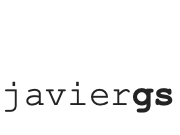I am presenting a short talk at the 42nd Conference of Research and Development by Tecnologico de Monterrey in Monterrey, Nuevo Leon, Mexico. January 2012.
Summary
Affective computing is about enabling a system to recognize and understand human emotions and to react in consequence to those understandings. Enabling computers to be empathetic has implied the convergence of affordable sensors and the application of novel machine learning and data mining algorithms to deal with the vast amounts of data generated by the sensors. There are several examples of research conducted on creating empathetic systems to support learning, health care and video games. But the majority of the research does not focus on the creation of reusable software, software frameworks or the best methodological practices for those purposes. These approaches are focused on creating a proof-of-concept system to collect data and validate technology approaches. The purpose of this paper is to illustrate how using patterns make it possible to model a multimodal emotion recognition framework, being this an intent to be a step forward to move from software development as one-of-a- kind endeavor to software development as a system of modules that are widely used and highly adaptable. Practitioners, developers and anyone with interest in patterns will find valuable our experience report about how patterns helped us to implement our framework. We envisioned for the implementation of the software dealing with a highly rotating development team, so we preferred to have a self-documented code using as much as possible pre-existent well known and documented solutions (patterns) in every aspect of the system. Not forcing the use of a pattern but superposing the use of it whenever it is possible. The organization of the paper is as follows: in section two, we provide the background of the project describing the devices, subjacent system architecture and quality attributes. In section three, we specify the design process and used patterns. In section four, we elaborate on scenarios of use and the evaluation of the framework. Finally, section five concludes the paper. This research was supported by Office of Naval Research under Grant N00014-10-1-0143 awarded to Dr. Robert Atkinson.
Source
Conference Paper.
Proceedings of 16th European Conference on Pattern Languages of Programs.
HillSide Group & Association for Computing Machinery (ACM)
Companion
42nd Conference of Research and Development by Tecnologico de Monterrey
Reference
Gonzalez Sanchez J., Chavez Echeagaray M.E., Atkinson R., Burleson W. (2012). Affective Computing Meets Design Patterns: A Pattern-Based Model of a Multimodal Emotion Recognition Framework. Companion of the 42nd Conference of Research and Development by Tecnologico de Monterrey. Monterrey, Nuevo Leon, Mexico. January 2012. Page 205. ISBN: 978-607-501-073-1
